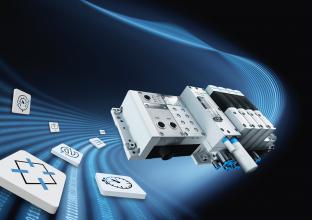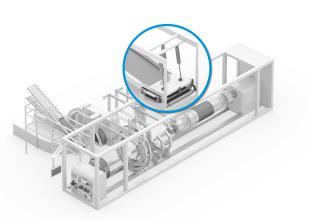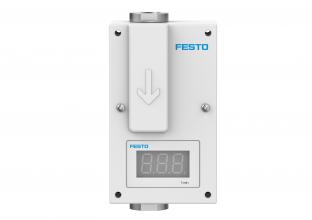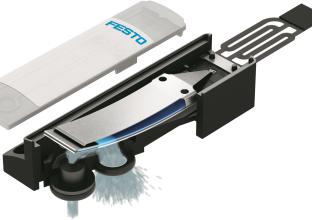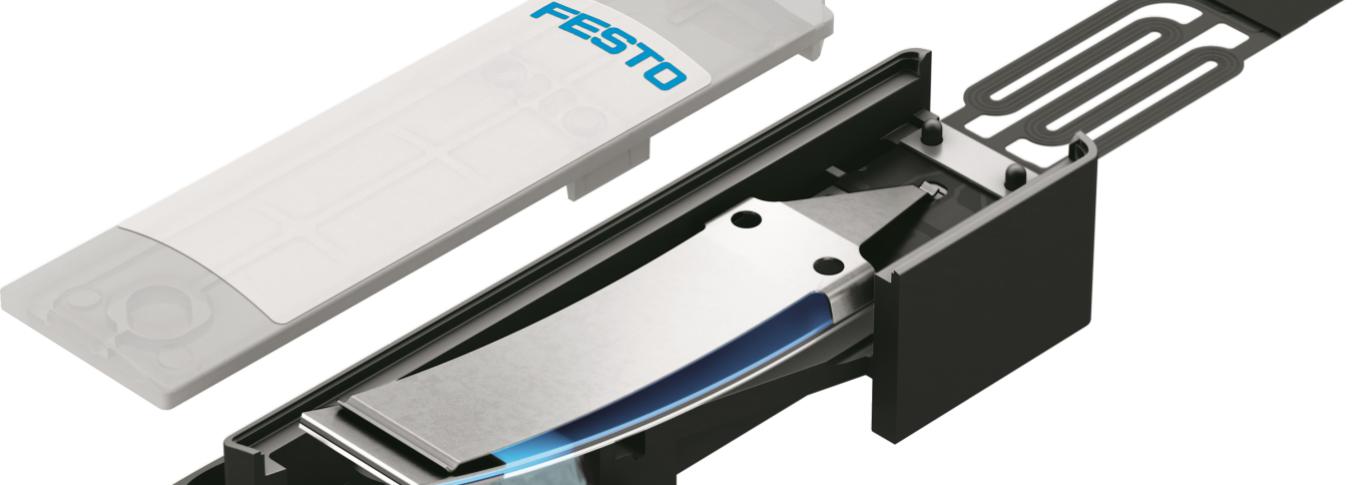
Moving into the future with Controlled Pneumatics
The production of tyres and the production of wafers seem to have absolutely nothing to do with each other. In terms of automation technology, however, they use the same technology: Controlled Pneumatics. That is why Festo has further developed compressed air technology to make pneumatics sustainable, resource-saving and energy-efficient.
In Controlled Pneumatics, Festo combines proportional technology, sensors and control algorithms to form a control loop. These are mechatronic pneumatic systems with innovative valve and communication technology that enable digital influence in conjunction with closed-loop control based on a sensor variable. This technology creates new areas of application, especially for pressure and flow control, that push the limits of pneumatics and enable simpler, more reliable, faster, more precise and more efficient solutions. Conventional standard pneumatics, on the other hand, are used specifically for simple applications such as point-to-point movements. It is above all the simplicity of standard pneumatics that makes it the ideal solution in many cases.
Digitised pneumatics
A prime example of a Controlled Pneumatics product is the Festo Motion Terminal VTEM, which Festo is using to digitise pneumatics. This automation platform uses piezo technology and Motion Apps that can replace over 50 individual components within a pneumatic control circuit.
When applied to tyre production, there is a potential for savings in the loading processes in the curing presses: with the Motion App “Selectable pressure level”, the Festo Motion Terminal allows the green tyre blank (raw tyre without tread) to be gently fed into the press. The smaller the fluctuations of the handling system during loading, the more the feeding-in speed can be increased. The process for each tyre is thus accelerated by several seconds. This doesn’t sound like much at first, but with roughly 1.8 billion car tyres produced each year, this can result in considerable sums for each tyre manufacturer. Another advantage of controlled pneumatics is that it reduces the impact forces and thus significantly increases the service life of the components used.
Less pressure = less energy
In practice, it is not just that the loading operations are accelerated, they also require less energy because pressure can be reduced and so compressed air consumption is also decreased. In addition, calculations reveal compressed air savings of nearly 33% when comparing the movement of the horizontally installed pneumatic cylinder DSBC with standard pneumatics, and of nearly 75% when the same cylinder is installed vertically. Just for controlling the vertical and horizontal cylinders, energy savings of roughly 60% are achieved during these loading and unloading operations.
Predictive maintenance
The Motion App “Leakage diagnostics” is also used, since it simplifies maintenance and automatically monitors leakages. Malfunctions can thus be detected and pinpointed to a specific actuator using diagnostic cycles and defined threshold values. This results in a reliable basis for predictive maintenance.
Furthermore, the Festo Motion Terminal can close off the faulty air duct, thus avoiding the supply of more and more compressed air if there is a leak. The innovative automation platform thereby prevents unnecessary air consumption.
Piezo technology prevents wear
When, on the other hand, wafers need to be transported and stored in the semiconductor industry, the N2 purge system from Festo prevents oxygen from oxidising the wafers. The cost-efficient flow controller therefore continuously supplies the atmosphere around the wafer with inert nitrogen. The flow controller, also known as the mass flow controller MFC, is based on piezo technology and integrated sensor technology.
The design of the piezo valve reduces the risk of contamination of the gas flow caused by particle abrasion over the entire service life. The peak value is around a particle size of 0.1 micrometres per switching cycle. Conventional solutions generate five times the particle content. The piezo technology used prevents wear caused by friction, thus considerably increasing the service life of the valve. In comparison to conventional solutions, this results in significant savings in operation and maintenance.
Low intrinsic energy consumption saves money
Thanks to its design, the directly operated flow controller reduces the risk of leakages. The electrical energy consumption is less than a watt. That is 80% less than with conventional solutions in both cases. The closed control loop ensures an accurate, stable and linear behaviour of the flow rate, with only minimal hysteresis. The repetition accuracy is +/-0.25% of the setpoint value.
With Controlled Pneumatics, the related digitalisation and with piezo technology, Festo is taking compressed air technology to a new technological level that is resource-saving, energy-efficient and sustainable.
费斯托 (Festo)是一家全球性的独立的家族企业,总部位于德国埃斯林根。自成立以来,Festo在工业自动化技术和技术教育方面制定标准,从而为环境、经济和社会的可持续发展做出贡献。公司为超过35个行业的30万家工厂和过程自动化客户提供气动和电驱动自动化技术解决方案,其中生命科学和实验室自动化业务受到越来越多的关注。Festo产品和服务遍布176个国家。2024年,费斯托在全球61个国家的250多个分支机构拥有约20600名员工,实现销售额34.5亿欧元。每年约8%的销售额用于研发。在这家学习型企业,1.5%的销售额用于基础和进一步培训。Festo 教学培训 (Didactic SE) 是全球领先的技术教育和培训供应商,为全球客户提供工业环境中全面的数字化和常规学习解决方案。

